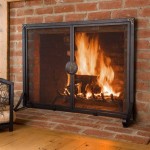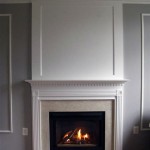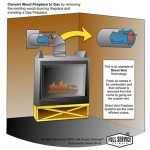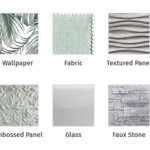Understanding and Utilizing Covers for Fireplace Vents
Fireplace vents are integral components of a functional fireplace system, ensuring proper combustion, airflow, and the safe removal of flue gases. However, when a fireplace is not in use, these vents can become pathways for drafts, pests, and energy loss. Consequently, employing a cover for a fireplace vent offers several benefits, ranging from improved energy efficiency to enhanced home security. This article delves into the various aspects of fireplace vent covers, exploring their types, functionalities, installation, and considerations for optimal use.
A fireplace vent serves multiple purposes during active use of the fireplace. It allows for the intake of fresh air, which is necessary for the combustion process. This intake air supports the fire, preventing it from suffocating due to a lack of oxygen. Simultaneously, the vent system, typically culminating in a chimney, provides an exit route for smoke, carbon monoxide, and other byproducts of combustion. Without a properly functioning vent, these gases can build up inside the home, posing a significant health hazard. Therefore, a fireplace vent is designed to facilitate a controlled and safe burning environment.
When the fireplace is not in operation, however, the same vent system becomes a conduit for unwanted elements. Cold air can enter the home through the vent, leading to drafts and increasing heating costs. Conversely, in warmer months, warm air can enter, potentially raising cooling expenses. Moreover, small animals, insects, and debris can find their way into the home via the vent, creating unsanitary conditions and potential damage. Therefore, a cover for the fireplace vent serves as a protective barrier, mitigating these negative impacts.
Types of Fireplace Vent Covers
Fireplace vent covers come in a variety of designs and materials, each offering distinct advantages and disadvantages. The selection of a suitable cover depends on the fireplace type, vent size, and individual preferences. Understanding the different types of covers available is crucial for making an informed decision.
One common type is the magnetic vent cover. These covers utilize a strong magnet to adhere to the metal vent opening. They are typically made of flexible materials like vinyl or rubber, allowing for a tight seal. Magnetic covers are easy to install and remove, making them a convenient option for occasional use. However, their effectiveness depends on the strength of the magnet and the flatness of the vent surface. They may not be suitable for vents with irregular shapes or those made of non-magnetic materials.
Another type is the expanding plug or damper. These devices are designed to fit snugly inside the vent opening, creating an airtight seal. They often feature an adjustable mechanism that allows the user to expand the plug to the exact size of the vent. Expanding plugs are typically made of rubber or foam and offer a more robust seal compared to magnetic covers. However, they may require more effort to install and remove, and they are generally more expensive.
For larger vent openings, such as those found in older fireplaces, a custom-built cover may be necessary. These covers are typically made of metal or wood and are designed to fit the specific dimensions of the vent. Custom covers offer the best level of protection against drafts and pests, but they are also the most expensive option and require professional installation.
Furthermore, there are inflatable vent plugs. These are inflated with air to create a tight seal inside the chimney flue. These are often used in conjunction with chimney balloons to prevent drafts from traveling all the way down a chimney not in use.
Finally, foam vent covers are another simple and inexpensive option. They are usually made of dense foam and are cut to fit the dimensions of the vent opening. Installation involves simply pressing the foam cover into the vent. While easy to install and inexpensive, foam covers may not provide the most airtight seal and may degrade over time.
Benefits of Using a Fireplace Vent Cover
The primary benefit of using a fireplace vent cover is improved energy efficiency. By preventing drafts from entering the home through the vent, the cover helps to maintain a consistent indoor temperature. This reduces the need for heating or cooling, resulting in lower energy bills. The energy savings can be significant, especially in homes with leaky or poorly insulated vents.
In addition to energy savings, a vent cover also helps to protect the home from pests and debris. Small animals, such as rodents and insects, can easily enter the home through an open vent. These pests can carry diseases, damage property, and create unsanitary conditions. A vent cover acts as a physical barrier, preventing these pests from gaining access to the home.
Furthermore, a fireplace vent cover can improve indoor air quality. Open vents can allow dust, pollen, and other allergens to enter the home. These allergens can trigger respiratory problems and worsen allergy symptoms. By sealing off the vent, the cover helps to keep these pollutants out, creating a healthier indoor environment.
Another significant benefit is the prevention of moisture buildup. During periods of high humidity or rainfall, moisture can enter the chimney and vent system. This moisture can lead to mold growth, rust, and other forms of damage. A vent cover helps to keep the vent system dry, preventing these issues and extending the lifespan of the fireplace.
Home security is also an indirect benefit. An open fireplace vent could potentially be used by intruders as a point of entry, though it is unlikely. Covering the vent adds a layer of security and prevents unwanted access.
Installation and Maintenance Considerations
The installation process for a fireplace vent cover depends on the type of cover chosen. Magnetic covers are the easiest to install, requiring only that the cover be placed over the vent opening. Expanding plugs and dampers require more effort, as they need to be inserted into the vent and adjusted to create a tight seal. Custom-built covers often require professional installation to ensure a proper fit.
Before installing any type of vent cover, it is crucial to ensure that the fireplace is completely cool and that there are no embers or hot ashes present. Attempting to install a cover on a hot fireplace can be dangerous and could damage the cover. Also, it is essential to carefully measure the vent opening to ensure that the cover is the correct size. An improperly sized cover will not provide an effective seal.
Once the cover is installed, it is important to inspect it regularly for damage or wear. Magnetic covers may lose their magnetic strength over time, while expanding plugs may become brittle or cracked. Any damaged covers should be replaced promptly to maintain their effectiveness. In addition, it is important to remove the vent cover before using the fireplace. Failure to do so can result in smoke and carbon monoxide buildup inside the home, posing a serious health risk.
Maintenance also includes cleaning the cover periodically to remove dust, dirt, and debris. This can be done with a damp cloth or mild detergent. For metal covers, it may be necessary to apply a rust-resistant coating to prevent corrosion. Storing the cover properly when not in use can also extend its lifespan. Ideally, the cover should be stored in a cool, dry place away from direct sunlight and extreme temperatures.
Safety is paramount when dealing with fireplaces and their components. Always consult the manufacturer's instructions for both the fireplace and the vent cover. If unsure about any aspect of the installation or maintenance process, it is best to seek professional assistance from a qualified fireplace technician.

Termination Cap Cover For Direct Vent Fireplace Draft Stopper

Modern Grilles Kratki

Termination Cap Cover For Direct Vent Fireplace Draft Stopper

Remove Or Cover Up Old Heatilator Vents Hearth Com Forums Home Fireplace Brick Makeover

Fule Magnetic Fireplace Draft Stopper Cover To Block Cold Air From Vent Prevent Heat Loss Magnet Screen Indoor Chimney Blocker Covers 40 X 6

Fireplace Vent Covers Stop Drafts Instantly

Termination Cap Cover For Direct Vent Fireplace Draft Stopper

Magnetic Fireplace Draft Stopper Vent Covers Screen Insulation Blocker For Winter Indoor Prevent Cold Air And Heat Loss Black Temu

Magnetic Fireplace Vent Covers Draft Stoppers 30sizes In

Termination Cap Cover For Direct Vent Fireplace Draft Stopper
Related Posts








